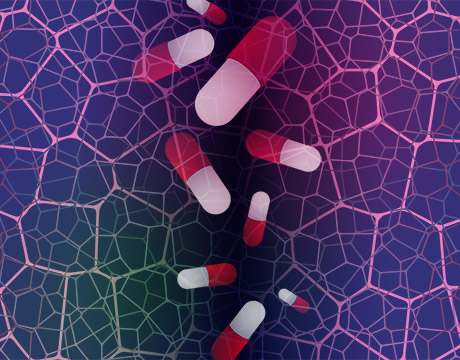Targeting Cancer Drugs to 3D-Printed Tumors
Targeting Cancer Drugs to 3D-Printed Tumors


If physicians knew in advance which medication would most effectively target a patient’s cancer, they’d immediately administer it. That efficiency could eliminate the lengthy trial-and-error process doctors now go through to find the best anti-cancer drug for each patient.
To achieve that, researchers at Rensselaer Polytechnic Institute and Albany Medical Center are developing a technique to 3D-print tumor models that can mimic the behavior of a tumor inside a person’s body. The goal is to accelerate the development of personalized anti-cancer drugs, says David Corr, one of the study’s principal investigators and a Rensselaer associate professor of biomedical engineering.
For You: 3D Printing Blooms in Biomedical
The problem with many of today’s cancer treatments is that doctors don’t know in advance whether a specific drug will target their patient’s tumors. They introduce an anti-cancer drug to a patient and then perform imaging and blood tests to see if the drug has been helpful. If tumor cancer markers are low, the doctor keeps the patient on the medicine. If not, they introduce another drug.
One of the main challenges in developing new and effective cancer treatments is the lack of adequate tumor models that can mimic in the laboratory how tumors may behave in a specific individual.Prof. David Corr, Rensselaer Polytechnic
“One of the main challenges in developing new and effective cancer treatments is the lack of adequate tumor models that can mimic in the laboratory how tumors may behave in a specific individual,” Corr says. “To achieve that, we have to not only develop new 3D bioprinting techniques to generate tumor models with prescribed cell composition and architecture, but also new imaging techniques to visualize how different drugs interact with cancer cells depending on where they are located within these tumor models.”
To build the tumor, researchers use a 3D printer to deposit living cells, which are infused in an ink or gel to keep them alive, layer by layer. The material is then incubated in a cell culture that mimics human body conditions.
After the tumor has been 3D printed, doctors would use the imaging technique to analyze the tumor while introducing drugs to it. That would allow researchers to examine the capability of drugs to bind to cancer cells, says Margarida Barroso, an associate professor of molecular and cellular physiology at Albany Medical College.
“Cancer cells possess specific receptors, which are proteins that act like antennae to which drugs can be targeted to lead to the eradication of tumors,” Barroso says. “Our imaging approach can detect the binding of drugs to those cancer antennae throughout the tumor in its native environment.”
Doctors use the technique to determine how well a drug actually targets and binds to a tumor’s cancer cells to ensure all cancer cells are targeted and not just a small fraction.
If a drug didn’t target and bind to all the cancer cells, the physician could repeat the analysis using a different drug. A medication that successfully targeted and bound to all the cancer cells would be introduced to the patient, Barroso says.
The research aligns with the university’s Center for Biotechnology and Interdisciplinary Studies, a group of researchers from across the institute that addresses cancer through a systems-based approach.
“Complex diseases such as cancer require a multifactorial approach. This project is an example of how Rensselaer, with its clinical partners, is changing the Healthcare paradigm by leveraging cutting edge technologies such 3D printing, and developing new imaging tools with a goal to deliver a personalized treatment modality,” says Deepak Vashishth, CBIS director.
Jean Thilmany is an independent writer.
Read More:
Mini Sensor Detects and Measures What We Eat
Engineers Contain Cancer Cells






